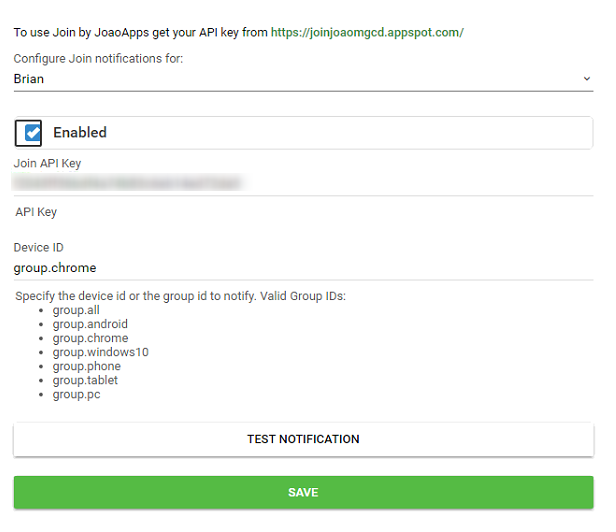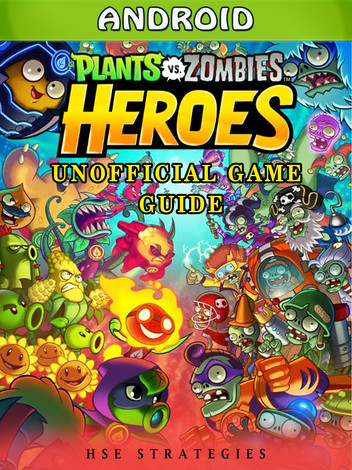
The Ultimate App Toolkit: Supercharge Your Experience with Android News, Phones, and Gadgets
Beyond the Basics: The Essential App Arsenal for the Modern Android Enthusiast
The Google Play Store is a universe of possibilities, a sprawling digital metropolis with millions of applications vying for your attention. For most users, this universe revolves around a familiar constellation of social media, streaming services, and productivity tools. But for the true Android enthusiast—the individual who eagerly follows the latest Android News, meticulously compares the specs of new Android Phones, and delights in integrating the newest Android Gadgets into their life—the standard app loadout is merely a starting point. This isn’t another generic “Top 10 Apps” list. This is a deep dive into the specialized toolkit that transforms your device from a passive content consumer into a powerful, personalized command center for your entire digital life.
We will explore a curated selection of applications designed not just for function, but for enhancement. We’ll move beyond the surface to uncover the apps that let you master your hardware, stay on the bleeding edge of the industry, and build a seamlessly integrated ecosystem. Prepare to unlock the full potential of the platform and tailor your Android experience to be as unique and powerful as the hardware it runs on.
Stay Informed: The Essential Apps for Cutting-Edge Android News
In the fast-paced world of mobile technology, staying informed is paramount. New devices are announced, software updates roll out, and industry-shaking news breaks almost daily. Relying on a generic news feed means you’ll often get the story late, or worse, miss the nuanced details that matter to an enthusiast. To truly stay ahead, you need to build a personalized, efficient, and powerful news hub. This is where dedicated news aggregation and consumption apps become indispensable tools.
Feedly: The Power User’s News Aggregator
At its core, Feedly is an RSS (Really Simple Syndication) reader, but that description barely scratches the surface of its capabilities. Instead of manually visiting a dozen different tech blogs and news sites every day, Feedly allows you to subscribe to their feeds and pull all their content into one clean, unified interface. This is its fundamental advantage over algorithms like Google News, which decides what it *thinks* you want to see. With Feedly, you are the editor-in-chief of your own tech journal.
Real-World Scenario: A true Android fan can create a dedicated “Android News” collection within Feedly. You would add sources like Android Police for deep dives, 9to5Google for ecosystem news, XDA Developers for the nitty-gritty on software mods, and GSMArena for detailed device specifications. Now, instead of juggling multiple browser tabs, you have a single, skimmable feed. Feedly’s AI assistant, Leo, can be trained to prioritize articles on specific topics like “Pixel Fold” or “Samsung DeX,” filtering out the noise and saving you precious time.
Inoreader: The Deep-Dive Research Tool
If Feedly is the daily newspaper, Inoreader is the research library. It offers a similar RSS aggregation service but layers on incredibly powerful tools for users who need to go deeper. Its standout feature is the ability to create complex rules and automated workflows. This is perfect for anyone tracking specific trends, device updates, or company news with precision.
Best Practice: Imagine you’re eagerly awaiting the next major software update for your specific model of an Android Phone. In Inoreader, you can set up a rule that constantly monitors your subscribed feeds for the keywords “Galaxy S24 Ultra One UI 7 Update.” When a new article matches, the rule can automatically tag it as “Important,” send you a push notification, and even email you the link. This level of automation ensures you’re the first to know about the developments that matter most to you.
Podcasts and YouTube: Audio-Visual Intelligence
Not all news is best consumed as text. In-depth discussions, hands-on reviews, and visual comparisons of new Android Gadgets are often best experienced through audio and video. Integrating these formats into your news diet is crucial for a well-rounded perspective.
Concrete Examples: An app like Pocket Casts or AntennaPod becomes your audio hub. You can subscribe to podcasts like the “Android Central Podcast” for weekly roundups or “All About Android” for deep-dive discussions. On the video front, the standard YouTube app is your gateway. Following channels like Marques Brownlee (MKBHD) for high-quality cinematic reviews or JerryRigEverything for durability tests provides a tangible sense of a device that text alone cannot convey.
Master Your Hardware: Apps to Tweak, Analyze, and Optimize Your Android Phone

Once you’re armed with the latest information, the next step is to apply that knowledge to the device in your pocket. The core philosophy of Android is customization and control. While manufacturers provide a solid out-of-the-box experience, a suite of power-user apps can unlock a level of personalization and functionality that truly makes the device your own. These tools allow you to automate your life, manage your data with precision, and understand the intricate workings of your phone’s hardware.
Tasker: The Ultimate Automation Engine
Tasker is arguably the most powerful application on the entire Google Play Store. It is a testament to Android’s open nature, allowing you to create complex, automated “if-this-then-that” scenarios without needing to root your device. The learning curve can be steep, but the payoff is an unparalleled ability to make your phone work *for* you, reacting to contexts like location, time, connected devices, and app states.
Real-World Scenarios:
- Smart Commute: Create a profile that triggers when your phone connects to your car’s Bluetooth. The tasks could be: set media volume to 80%, launch Waze, and start playing your “Driving” playlist on Spotify. When it disconnects, it automatically turns off GPS to save battery.
- Work/Life Balance: Set up a location-based profile for your office. While at work, it silences social media notifications. When you leave the office geofence, it re-enables them.
- Gadget Awareness: Link Tasker to your smartwatch. If the watch disconnects from Bluetooth unexpectedly (e.g., you walk away from it), Tasker can make your phone vibrate and display a “Don’t forget your watch!” alert. This is a perfect example of integrating an Android Gadget into a smart workflow.
Common Pitfall: New users often feel overwhelmed by Tasker’s interface. A great way to start is by importing pre-made profiles from the community-driven TaskerNet, analyzing how they work, and then modifying them to fit your specific needs.
Solid Explorer: Beyond the Default File Manager
Every Android phone comes with a basic file manager, but for anyone who needs to manage files across different locations, it’s often inadequate. Solid Explorer is a robust, dual-pane file manager that provides a desktop-class experience. Its intuitive design makes managing local files, cloud storage, and even network drives a seamless process.
Real-World Application: Imagine you’ve just recorded a long 4K video on your phone that you need to edit on your PC. Instead of fumbling with a USB cable, you can use Solid Explorer. With one pane showing your phone’s camera folder and the other connected to a shared folder on your home network (via SMB), you can simply drag and drop the file over Wi-Fi. This level of control is essential for power users who treat their Android Phones as serious content creation tools.
DevCheck Hardware and System Info: Know Your Phone Inside and Out
Are you getting the performance you paid for? Is an app draining your battery in the background? DevCheck provides a detailed, real-time dashboard of your phone’s vital signs. It goes far beyond the basic information in the settings menu, offering a granular look at CPU core frequencies, battery temperature and health, sensor data, and detailed network information.
Data-Driven Insights: When a new software update is released, some users might report poor battery life. With DevCheck, you can monitor your own device’s battery discharge rate and CPU state before and after the update to see if you’re actually affected. It’s an invaluable tool for troubleshooting, verifying the specs of a new device, and satisfying your curiosity about the powerful hardware running in the palm of your hand.
Unify Your Ecosystem: The Best Apps for Managing Android Gadgets
Your smartphone is no longer an isolated island. It’s the central hub of a growing ecosystem of connected devices—smartwatches, earbuds, smart speakers, and more. The true magic happens when these devices work in concert. The right applications can bridge the gaps between your hardware, creating a cohesive and intelligent system where the whole is greater than the sum of its parts. These apps are the digital glue for your collection of Android Gadgets.
Join by joaoapps: The Missing Link Between Your Devices
Developed by the same creator as Tasker, Join is a fantastically powerful tool for syncing your digital life across your phone, tablet, and computer. It allows your devices to communicate directly with each other, enabling a universal clipboard, easy file transfers, notification mirroring, and much more. It effectively breaks down the walls between your different operating systems.
Case Study: You are browsing the latest Android News on your Windows PC and come across a review of a compelling new app. Instead of manually searching for it on your phone, you right-click the Play Store link on your PC and use the Join Chrome extension to “push” it to your phone. A moment later, the Play Store page opens automatically on your device, ready for you to install. Later, you get an SMS on your phone. A notification pops up on your PC, and you can type out a full reply using your computer’s keyboard without ever touching your phone. This seamless flow is a game-changer for productivity.
MacroDroid: User-Friendly Automation for Your Gadgets
While Tasker offers near-infinite power, its complexity can be a barrier. MacroDroid provides a much more accessible entry point into the world of automation, using a simple and intuitive “Trigger -> Action -> Constraint” model. It’s particularly adept at creating automations that involve your various Android Gadgets.
Practical Example: You can easily create a “Good Night” macro. The *Trigger* is your Galaxy Watch being placed on its wireless charger. The *Action* is to set your phone to “Do Not Disturb” mode. The *Constraint* is that it must be after 10 PM. This simple, three-step macro intelligently links the state of one gadget to the behavior of your phone, automating a daily routine with zero effort.
Google Home: The Command Center for Your Smart Life
The Google Home app is essential for anyone invested in the smart home ecosystem. It serves as the central command and control panel for a vast array of devices, from Google’s own Nest speakers and displays to thousands of third-party smart lights, plugs, thermostats, and cameras. Its power lies in its ability to group these disparate devices into “Routines.”
Best Practice: Don’t just use the app to turn individual lights on and off. Dive into the Routines feature. Create a “Leaving Home” routine that, with a single voice command (“Hey Google, I’m leaving”), turns off all the lights, adjusts the thermostat, and could even start your robot vacuum. You can also create a “Movie Night” routine that dims the lights, turns on the TV, and sets your smart speakers’ volume to the perfect level. It’s the key to making your collection of gadgets feel like a single, intelligent home.
Putting It All Together: A Curated Toolkit for Every Enthusiast
We’ve covered a lot of ground, from news aggregation to deep system automation. The key is to choose the tools that best fit your specific needs and interests as an Android enthusiast. Here are some recommended toolkits based on different user profiles.
For the News Junkie:
Your goal is to absorb and share information efficiently. Your toolkit should be:
- Feedly: To curate a perfect feed of your favorite tech sites and stay on top of all Android News.
- Pocket Casts: To listen to in-depth analysis from tech podcasts during your commute or workout.
- Join: To seamlessly share interesting articles and links between your phone and your computer.
For the Power User & Tinkerer:
You love to customize, optimize, and understand the inner workings of your Android Phone. Your toolkit should be:
- Tasker: For ultimate control and automation of every aspect of your device.
- Solid Explorer: For no-compromise file management across local, cloud, and network storage.
- DevCheck: To monitor your system’s performance and ensure your hardware is running optimally.
For the Gadget Guru:
You have a growing ecosystem of connected devices and want them to work together harmoniously. Your toolkit should be:
- Google Home: To serve as the central command center for all your smart home devices.
- MacroDroid: For creating simple, powerful automations that link your Android Gadgets together.
- Join: To ensure your phone, tablet, and PC are always in sync, no matter which one you’re using.
Tips and Considerations:
Remember that with great power comes great responsibility. Powerful automation apps like Tasker can impact battery life if configured with constantly running tasks, so be mindful and monitor your usage. Furthermore, always pay close attention to the permissions these apps request; they often need deep system access to function, so be sure you’re downloading them from a trusted source like the Google Play Store.
Conclusion: Crafting Your Perfect Android Experience
The beauty of the Android platform has always been its unparalleled freedom of choice and customization. The applications we’ve explored are more than just utilities; they are enablers of that philosophy. By carefully selecting a toolkit that aligns with your passions—whether it’s staying on the pulse of Android News, fine-tuning the performance of your Android Phone, or orchestrating a symphony of smart Android Gadgets—you elevate your device from a simple tool to a truly personal companion. The ultimate Android experience isn’t about having the most apps; it’s about having the *right* apps. So go forth, experiment, and build an experience that is uniquely, powerfully, and perfectly yours.



